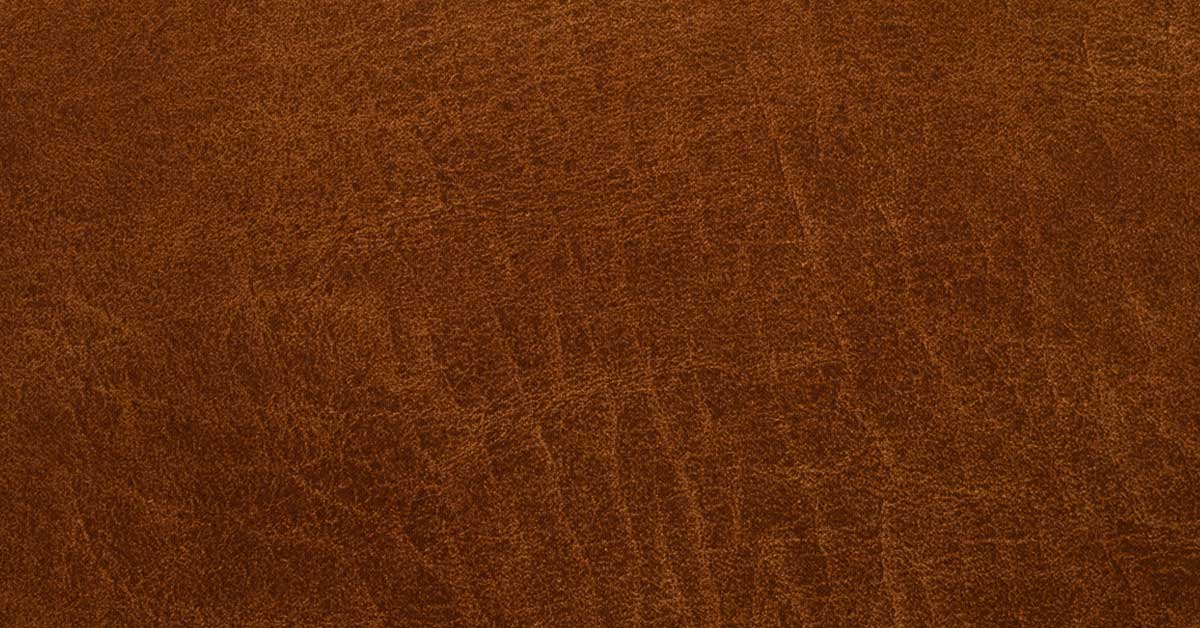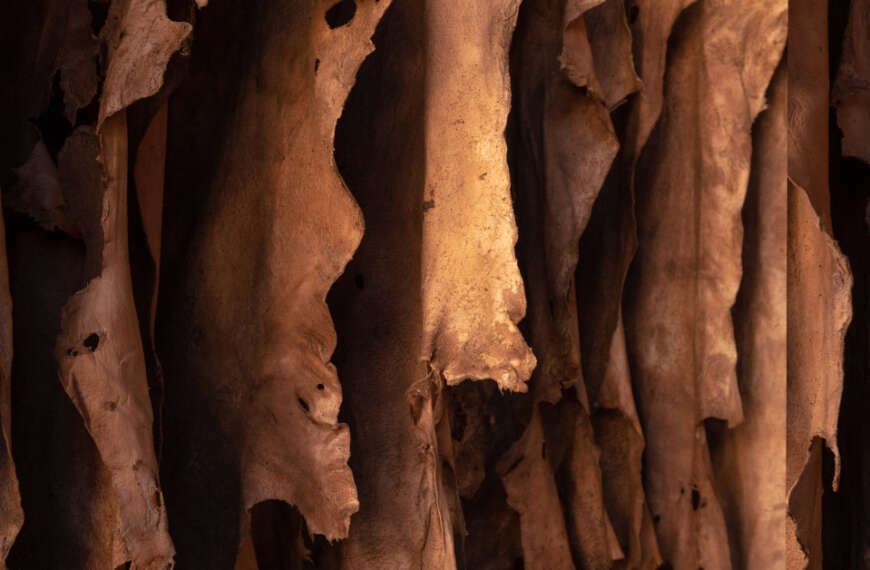Leathercraft has been around us for a long time now, but knowing everything about leather is quite difficult. The editors at The Jacket Maker have prepared a leather manual to let everyone know all about leather.
Starting from the types of leather, we will be covering the finishes, appearance, textures, and types of stitching involved in leather crafts.
What is Leather?
Leather is a durable and flexible material that is obtained from animal skins. The animal hides are processed which include, dying and tanning in order to achieve the final product which is used for various things. Leather has been around the human race since the stone age. The item was used initially to fight cold climatic conditions due to its warm characteristics.
Where is Leather Use?
Leather is used in various things which include:
- Jackets
- Clothing
- Wallets
- Keychains
- Outerwear
- Car seats
- Couches
- Sofas
- Furniture
- Gloves
- Aprons
- Shoes
Types of Leather
When it comes to the types of leather, the main thing is the quality, but it really means from which animal the leather is obtained. The main resources for leather are;
- Cowhide: Obtained from the cows, also known as cowhide leather.
- Sheep: Obtained from sheep, also known as sheepskin leather.
- Goat: Obtained from goats, also known as goatskin leather.
- Calf: Obtained from baby cows, also known as Calfskin leather.
- Lamb: Obtained from baby sheep, also known as lambskin leather.
- Buckskin: Leather obtained from deers. Comparatively thick leather.
- Pig: Obtained from Pig, also known as pig-skin leather.
- Bullhide: Leather obtained from bulls, thicker than cowhide.
- Cordovan: Leather made from the tight firm portion of horse butts
- Deerskin: Leather obtained from deers.
- Elk Leather: Leather obtained from elks, Also known as Wapiti leather.
- Kip Leather: Skin from a bovine animal in size between a calf and a cow.
- Woolskin: Sheepskin which is tanned with the wool on.
Grades of Leather
There are various grades of leather that differentiate one from the other by the durability, quality, and performance of the leather. The grades are as follows;
- Natural Grain: Leather retaining the natural grain.
- Full-Grain: The most strongest and durable part of the animal hide.
- Top Grain: Obtained from buffing the outermost layer of the hide.
- Split-Grain: Underside of the topgrain leather.
- Genuine: Layer of real leather which is of lowest quality.
- Bonded: Contain traces of real leather bonded together by a adhesive.
- Altered Leather: Leather that has the original surface of the skin or hides removed, usually due to imperfections in the original grain surface, and a new grain embossed into the leather.
- Corrected Grain: Leather hide followed by a correction proces to lighten the natural scars and imperfections.
- Gusset Leather: Soft and flexible leather used in making shoes, bags and cases.
- Harness Leather: Cowhide, vegetable tanned leather which is highly durable and thick.
- Lining Leather: Thin leather used for lining purposes, such as in leather jacket collars, bag and shoes detailing.
- Naked Leather: Un-finished, un-dyed only tanned leather which keeps the natural grains.
- Orthopedic Leathers: Leather used in making artificial limbs and orthopedic procedures.
- Production Run:Cheap, ungraded leather sold to manufacturers.
- Saddle Leather: Flexible, vegetable tanned cowhide leather used for harness and saddlery.
- Shearling: Leather made from sheared sheepskin
- Strap Leather: Heavy vegetable-tanned leather made for industrial use.
- Upholstery Leather: Leather made for furniture and automobiles.
Appearance
There are various appearances of leather which are either natural or synthetic.
- Distressed: Leather with artificial worn or aged appearance.
- Crackled: Leather characterized by a network of fine lines to create a cracked effect.
- Crunchy: Artificial crunchy looked leather.
- Rustic: Soft, dark, color changing leather.
- Weathered: Natural distressed leather with scar marks.
- Grunge: Naturally scarred leather with every piece being unique.
- Embossed Leather: Artificial applied grains to smooth surfaces to give a natural look to the leather.
Finishes
- Matte: Uniformed finished smooth leather with no shine.
- Shiny: Has a nice shine to it.
- Glossy: Shiny leather with little light glare to it.
- Natural: Has no leather finish to it, completely natural.
- Burnished: Has a burned appearance with dark veins in the leather.
- Rub–off: Brighter colored based dyed with darker color in order to give an antique look.
- Aniline: Finished only on high quality leather with soluble dyes.
- Semi–Aniline: Slightly pigmented leather in order to keep the natural pores of the hide.
- Oily Pull–Up: Aniline dyed leather which gives scars and marks when stretched.
- Glazed Finish: The finish is produced by polishing the grain surface under the intense pressure of a roller of agate, glass, or steel.
- Nap Finish: A soft, wooly finish that resembles suede.
- Nude Finish: Leather which is vat dyed with particularly no to little protective coat.
Textures
- Suede: Made from the underside of the hide, has a softer feel as compared to full-grain.
- Nubuck: Nubuck is made from the outerside of the hide, has a softer feel, to it.
- Pigmented: Durable leather that hides the natural look and grains of leather due to pigmentation.
- Buffered: Smooth, buffed texture with little to no grains on the outermost shell.
- Natural: Granular, porous textured leather with imperfection which reflects the natural state of the hide.
- Latigo: Dual- tanned durable and water-resistant leather.
- Smooth: Buffed, or smooth-looking leather.
- Hair Cells: Natural or artificial hair follicles on the leather.
- Embossed: Artificial grains on leather that have been corrected to remove imperfections.
- Tiny Pebble Grain: Grains that look like tiny pebbles, slightly bolder than the natural grain leather.
- Medium Pebble Grain: Bolder grain has a distinct feel when you rub your hand over it.
- Large Pebble Grain: Bold, large-sized grains which resemble a pebble.
- Boardy: Stiff leather that is not flexible.
- Bridle Leather: Water-resistant, vegetable-tanned leather that is stuffed with wax and oils.
Types of Leather Stitching
- The Single Stitch: Only one thread passed through the needle’s eye and then sewed to the leather through the holes.
- Saddle Stitch: The process consists of having two stitches in the same row.
- Box Stitch: This specific type of stitch is the best go-to for corners.
- Cross Stitch: The stitch is similar to the single z stitch but instead of the z’s, the stitch forms a line of the x’s.
- The Baseball Stitch: The stitch makes v like symbols throughout the item. This forms an overall pattern along with the item when sewed together.
- Lock Stitch: It is a double-thread stitch that locks the threads together within the material.
Types of Tanning & Processes
- Chrome Tanned: Leather tanned using chromium sulfate, which is a lot quicker process.
- Oil-Tanned: Leather impregnated with certain oils as part of the tanning and dyeing process.
- Vegetable Tanned: Leather tanning is performed by soaking it in a solution made up of vegetable tannins.
- Brain Tanned: Tanning process which uses emulsified oils, often those of animal brains such as deer, cows, and buffaloes.
- Blue: Hides that have been chrome tanned but not dyed.
- Chrome Re-tan: Leather tanned with chromium sulfate then re-tanned by vegetable tannins.
- Crust: Vegetable tanned leather that has not been applied with the finish.
- Currying:
- Deer-tanned cow: Cowhide that is tanned to resemble deer leather.
- Hair-on leather: Leather tanned without removing the hair on the hide.
- Mineral Tanned: Tannage using mineral compounds that are naturally established.
- Oak Tannage: Vintage tanning process that uses oak wood in order to tan the leather.
- Rawhide: Hide that has not been tanned or dyed but is in its natural state.
- Re-tannage: A modifying secondary tannage, applied after intermediate operations following the primary tannage.
Dyeing
- Bleeding: Dye bleeding is often followed by the interaction with water which looks like the dye is bleeding out of the leather.
- Drum Dyeing: Hides that are processed in drums filled of stones and dye to make the leather softer and flexible.
- Milling: The natural softening process of the leather hide.
- Vat dyeing: The application of dye using the immersion of leather in the vats which contain dyestuff solutions.
After Effect of Leather
- Patina: A leather patina naturally occurs on the leather surface that becomes beautiful with time, as they age.
- Cracking: The dye tends to crack and leave the hide if the leather is of low quality.
- Peeling: Low-quality leather such as bonded leather leaves the surface due to which the outermost layer seems as if it’s peeling.
Measuring Leather:
In order to measure the leather there are various terminologies that are used, the leather hide is measured in square feet by width and the thickness of the leather hide is measured in iron. The hide is measured accordingly in order to distinguish them into the grades they must lie under.
- Iron: Term used to measure the thickness of the leather, One Iron equals 1/48th of an inch. (0.53mm).
- Ounces: Leather is weight under the term ounces, it can vary from nation to nation and the units they use, it can also be in Kilograms or Pounds.
- Square Feet: The hides are measured in square feet or yards before they are sent to be processed.

